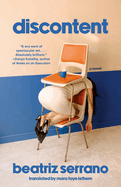
| Publisher: | Vintage | |
| Genre: | Dark Humor, Women, Hispanic & Latino, Humorous, Literary, Fiction | |
| ISBN: | 9798217006762 | |
| Pub Date: | September 2025 | |
| Price: | $17 |
| Starred | Fiction |
by Beatriz Serrano, trans. by Mara Faye Lethem
Beatriz Serrano, a journalist for Spain's El País newspaper, hypnotizes with her brilliant fiction debut, Discontent, engagingly translated by Mara Faye Lethem. Serrano's dedication, "For everyone who wakes up, every day, with no desire to go to work," sets the perfect tone to introduce her protagonist's attitude about her stifling career.
Marisa, 32, has worked in advertising for eight years, the last four as creative strategist for a Madrid agency. She also teaches at a private university, "thanks to the English diploma [she] listed on LinkedIn." She attributes her success to "perfecting the office game until everybody believed [she] was a great professional," yet she can only get through the days by watching YouTube behind closed doors, escaping to nonexistent meetings, relying on the Internet and her students to do her work. Alas, she's utterly miserable: "I broke down every morning when the alarm beeped because life, lived this way, seemed like a badly written tragedy." She's already lost (to suicide) the sole co-worker with whom she had "encounters that could be classified as pleasant." And now she's facing a team-building retreat, "an entire weekend surrounded by people," all of whom she can't stand. Drugs, alcohol, and kissing strangers may well be the only way to survive.
Serrano's biting insight illuminates virtually every page, rife with stinging wisdom ("My job is to be nice and sell snake oil") and cutting one-liners ("It's 5:30. I've tricked capitalism for one more day"), as she deftly exposes the herculean challenges of quotidian life. She closes her acknowledgments with a thankful, delightful promise for more: "I trust we will meet again." --Terry Hong
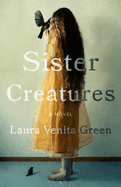
| Publisher: | Unnamed Press | |
| Genre: | Women, Occult & Supernatural, Horror, Literary, Southern, Gothic, Fiction | |
| ISBN: | 9781961884571 | |
| Pub Date: | October 2025 | |
| Price: | $28 |
| Starred | Fiction |
by Laura Venita Green
With Sister Creatures, Laura Venita Green invites her reader to navigate a shape-shifting world, beginning in rural Louisiana and ranging overseas and into starscapes and imagination. Rotating among a small group of girls and women, this imaginative narrative muddies the line between the novel's real world and a fictional one within it. The result is dreamy, often disturbing, and hauntingly unforgettable.
Tess uses her isolated job as a live-in nanny to hide away from the life she feels has already cratered, at age 20, with her heavy drinking. A neighboring teenager, Gail, makes a disquieting appearance: she is clearly not well, perhaps in danger, but rejects Tess's half-hearted offer to help. Tess's former best friend, Lainey, leaves Louisiana, resulting in permanent banishment at the hands of a troubled younger sister. Another young woman, Olivia, wrestles with the local options, characterized as "Jesus and booze," and with a sexuality not likely to be tolerated there. And then there is a recurring character whose entire reality seems in question. While they all choose to leave Pinecreek, the struggles that originate in their shared hometown follow these characters to Munich, Baltimore, New York City, and beyond.
In their parallel comings-of-age, and across generations, Green's characters thread their paths between love and spite, affection and abuse. Their loose connections and jumps in chronology reward close attention, contributing to a slightly off-balance reader experience that is very much a part of the novel's atmosphere.
Sister Creatures is ruled by nuance and surreality. It is often unsettling, but pairs moments of great sweetness alongside discomfiting ones. This novel remains thought-provoking long after its final pages. --Julia Kastner, blogger at pagesofjulia
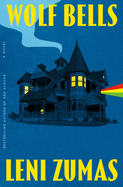
| Publisher: | Algonquin | |
| Genre: | World Literature, American - 21st Century, Political, Fiction, Neurodiversity | |
| ISBN: | 9781643756578 | |
| Pub Date: | September 2025 | |
| Price: | $28 |
| Fiction |
by Leni Zumas
An incredibly rich assortment of individuals dwell in a cliffside house that provides a backdrop and serves as a catalyst in Leni Zumas's superb novel Wolf Bells. The House, as its myriad residents refer to it, is under the helm of Caz, a punk rocker turned all-ages retirement home leader. She's the great-granddaughter of the sea captain who built the place. Bits of history--of the house, of Caz's background--nest within this novel in which Zumas (Red Clocks; The Listeners) labels each scene with the room it takes place in, forgoing chapter or section names.
While much of the novel is concerned with the specific stories of those who've wound up in the House--such as Adeline, Caz's mother who carries around a stuffed porcupine, and Davey, a young veteran who likes guns and sleeping with Caz--the dramatic tension originates with Nola and her younger cousin, James, who is autistic. They arrive on the porch after running away from Child Protective Services. While Caz waits for James's mother to arrive, his presence prompts care and memories from Marika, a Holocaust survivor who had a brother similar to James, and mostly compassionate reactions from the rest of the house. Twined throughout the narrative of what will happen to these children is the long friendship (and feuds) between Caz and her former bandmate, Vara, a resident who acts as a nursing assistant for the community.
Zumas deftly renders the small and big dramas of group living, the idiosyncrasies of the old and young, and the loneliness possible even amid a crowd. --Nina Semczuk, writer, editor, and illustrator
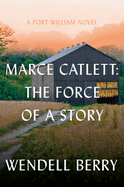
| Publisher: | Counterpoint | |
| Genre: | Nature & the Environment, Small Town & Rural, 20th Century - General, Fiction, Historical | |
| ISBN: | 9781640097759 | |
| Pub Date: | October 2025 | |
| Price: | $26 |
| Fiction |
by Wendell Berry
Wendell Berry (The Need to Be Whole) has never hidden behind his stories; the land and people of Port William, Ky., have always been his land and his people. This truth is perhaps never more obvious than in Marce Catlett, where an elderly Andy Catlett looks back along the long line of his life and that of his father and grandfather, to the story that "has held them together like a living root of the same tree."
The story is of their 1906 tobacco crop--of Marce Catlett's long, slow trip to Louisville, where their tobacco will be sold. The auction's sole buyer pays mere pennies on the pound, leaving them unable even to cover the cost of its sale by the proceeds. Berry titles this first section "The Past," and the remaining section "The Future," but the story of that 1906 crop lives ever-present in Andy Catlett's life.
Andy Catlett's life mirrors Berry's own: his lawyer father, his love of books, his departure from and sure return to the Kentucky landscape that captured his heart in youth. At times, Berry's voice is nearly strident, a bitter mourning for a life destroyed by "the all-out industrialization of rural America." At others, he tenderly details the long year's work of raising and bringing in a tobacco harvest, calling it "beautiful at every step and stage." So when Andy "prays his benediction and farewell," readers will also hear that of Berry; "his requiem" for "the way that once lived among them, the paths worn and wearing day by day, that connected them during a lifetime to one man's effort and desire." --Sara Beth West, freelance reviewer and librarian

| Publisher: | Two Dollar Radio | |
| Genre: | Dark Humor, World Literature, Humorous, Satire, Europe (General), Fiction | |
| ISBN: | 9781953387943 | |
| Pub Date: | September 2025 | |
| Price: | $17.95 |
| Fiction |
by Katharina Volckmer
In Katharina Volckmer's outrageous second novel, Calls May Be Recorded, a sex-obsessed call center employee confronts his issues with his self-absorbed mother and his own overweight body during one typical day on the job.
Jimmie may work for London's Vanilla Travels Ltd., but his sexual fantasies are anything but. The homosexual and former actor is preoccupied with his weight ("his body was taking up too much space") and still lives with his mother, "the Signora" ("Raised by women, Jimmie had been pro-vagina for as long as he could think. Even if they did nothing for him erotically, he had always acknowledged their struggle"). His catholic imagination covers heterosexual hook-ups between colleagues and a co-worker's toilet habits. And it's not all in his head; while wearing his mother's lipstick, he pleasures a male colleague in a bathroom stall.
"Thank you for waiting. My name is Jimmie. How can I help you today?" each call opens. He's on the complaints line. The customers' situations are bizarre--the hotel room is too orange, the pool boys are not flirtatious enough, the "Romantic Spa Break" is not welcoming to singles--and his replies are wildly inappropriate. It's only a matter of time until he faces disciplinary action. In fact, his supervisor asks for a meeting that afternoon. But through one last call, Jimmie just might find the impetus to change his life.
As in her debut novella, The Appointment, Volckmer fearlessly probes the psychological origins of gender dysphoria and sexual behavior. This X-rated version of The Office, though not for the squeamish or easily offended, is uproarious fun for Shalom Auslander and Timur Vermes fans. --Rebecca Foster, freelance reviewer, proofreader and blogger at Bookish Beck
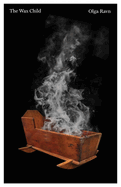
| Publisher: | New Directions | |
| Genre: | Occult & Supernatural, World Literature, Horror, Denmark, General, Fiction, Historical | |
| ISBN: | 9780811238830 | |
| Pub Date: | September 2025 | |
| Price: | $19.95 |
| Fiction |
by Olga Ravn, trans. by Martin Aitken
Danish novelist and poet Olga Ravn hauntingly combines Nordic folklore and historical sources to fiercely reimagine the experiences and tribulations of a 17th-century noblewoman accused of witchcraft in The Wax Child. She reunites with award-winning translator Martin Aitken after her 2021 International Booker Prize-shortlisted novel, The Employees.
The titular wax child is "shaped in beeswax... made like a doll the size of a human forearm" by Christenze Kruckow in Nakkebølle on the Danish island of Funen. It is christened under the still darkness of night. As Ravn's narrative opens, Christenze is dead, but the abandoned wax child insists on bearing witness to its mistress's horrific demise.
Christenze, born noble but impoverished, works at Nakkebølle Manor as a servant, while also befriending the manor's young wife, Anne. After losing 15 infants over 12 years, Anne "cast her gaze at Christenze." Anne convinces others that Christenze is behind the murders of her babies, prompting her husband to "initiate proceedings against [Christenze] with the charge that she did harm by means of witchcraft." Christenze flees to northern Aalborg in 1616. First she meets Maren and is "enchanted by the forbidden love of a woman." Maren introduces her to a collective of strong wives. Among them is Elisabeth, who is abused by her husband and who eventually betrays these women to his machinations.
Ravn's author's note illuminates fascinating historical provenance, the "letters, ledgers, court documents and theological texts" associated with Danish witch trials recorded between 1596 and 1621. The "spells" recorded throughout are also borrowed, from "so-called black books, grimoires and other such works." Four centuries later, Ravn enthrallingly immortalizes those long-silenced voices. --Terry Hong
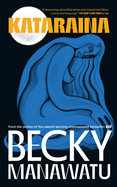
| Publisher: | Scribe US | |
| Genre: | New Zealand, Psychological, World Literature, Family Life, Indigenous, General, City Life, Literary, Fiction | |
| ISBN: | 9781964992181 | |
| Pub Date: | September 2025 | |
| Price: | $22 |
| Fiction |
by Becky Manawatu
Becky Manawatu (of Ngāi Tahu, Ngāti Māmoe, Waitaha heritage) won Aotearoa New Zealand's leading fiction prize for her debut novel, Auē, which centered the youngest members of the extended Te Au family. The climax of Auē, when "the girl shot the man," is the central moment for Kataraina, which is both prequel and sequel to its predecessor. Virtually every Kataraina chapter title hauntingly repeats that phrase, presenting events as before or after--in hours, days, years--that pivotal moment when tween neighbor Beth shot Katarina's brutal husband, Stu.
Manawatu's remarkable narrative puzzles together Katarina's fractured life via nonlinear chapters, introducing her as "a worried baby... like she had arrived at the wrong place, at the wrong time." From childhood, her "power" is the ability to "absorb other people's mamae [pain]," but enduring means splitting her very self into escapist Swamp-Kat and obedient Mess-Kat, and later depleted Ghost-Kat in adulthood to survive violent Stu, who was once mistaken for a "good man." She loses both her older twin siblings but inherits their children. Intertwined with Kat's scattered story is a cautionary ancestral tale and a culturally significant environmental field study of Kat's family's surrounding swamplands.
Despite the single name, Kataraina is a sprawling, polyphonic experience. Abuse and tragedy give way to joy, recovery, reunion. Manawatu inventively manipulates time, place, and history, hinting at fabulism. Her lyrical vocabulary honors her strong connection to her Indigenous roots; she appends a detailed glossary of Māori words and phrases. Reading Auē and Kataraina together undoubtedly adds layers of insight, but Kataraina also stands staunchly, proudly, unabashedly alone. --Terry Hong
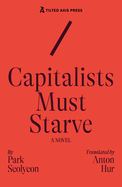
| Publisher: | Tilted Axis Press | |
| Genre: | World Literature, 20th Century - General, Literary, Political, Fiction, Historical, Korea | |
| ISBN: | 9781917126212 | |
| Pub Date: | October 2025 | |
| Price: | $18.95 |
| Fiction |
by Seolyeon Park, trans. by Anton Hur
Seolyeon Park and Anton Hur, the notable writer/translator duo behind A Magical Girl Retires, reunite for Capitalists Must Starve, which perceptively imagines the short life of early 20th-century activist Kang Juryong, who led a labor strike at the Pyongwon Rubber Factory in Japanese-occupied Pyongyang in May 1931.
Before all that, Juryong is "our Kang girl," her mother's beloved daughter, who is "the prettiest thing" on her wedding day. She is 20, "a shamefully old age to get married"; her groom, Jeonbin, is 15. The arranged strangers share true love, and she follows Jeonbin to join the liberation movement even as she believes, "What's the use of liberating a country that fails to protect or take care of me?" When Jeonbin dies, her in-laws accuse her of murder and demand she be jailed. Due to a lack of evidence, Juryong is released and returns to her family, but soon flees to escape another marriage. She moves back to Pyongyang, where she lived as a child, for a while finding "unexpected joys... in earning and spending her own money." The bosses prove abusive, the work grueling, pay cuts relentlessly looming. Initially unwilling, she rises as a leader other women want to follow.
Park strikingly depicts a woman discovering her stifled strength under horrific circumstances, fiercely working toward more than mere survival. "The greatest bit of learning I have ever received is that there is no higher honor than to sacrifice one’s life for the greater good," Juryong insists, confronting injustice to her very death. Nearly a century later, Park adamantly reclaims history to underscore how the righteous fights must continue. --Terry Hong
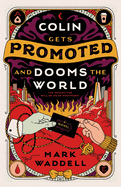
| Publisher: | Ace | |
| Genre: | Dark Humor, Occult & Supernatural, Humorous, Fantasy, General, Contemporary, Fiction, LGBTQ+ | |
| ISBN: | 9780593818404 | |
| Pub Date: | October 2025 | |
| Price: | $19 |
| Science Fiction & Fantasy |
by Mark Waddell
An office worker makes a deal to get ahead in Mark Waddell's comedic fantasy novel, Colin Gets Promoted and Dooms the World. Colin Harris is one of many Dark Enterprises employees around the world who make the bureaucracy of evil--such as harvesting human screams--possible. After years of diligence, however, he's now in danger of being (literally) terminated for spurning his boss's sleazy advances. With death imminent, he can't refuse when a shadowy entity offers him a deal. All he has to do to seize the power he's always craved is unleash an unspeakable evil.
At first it seems Colin's got it all: a shiny new job, revenge on his former co-workers, and even a budding romance with a guy everyone says is way out of his league. Maybe he'll even get to "ascend to middle management." Then people start disappearing by the thousands. However, Colin isn't just some bumbling good guy caught up in an evil corporation. Even his eventual heroism is dubious: "To heck with everyone else. I was going to save the world, and then take from it everything I'd ever wanted."
With plenty of jokes about shady executives, corporate drudgery, and ritual sacrifice, Waddell (The Body in the Back Garden) has created a romp that will have readers wondering how Colin will get himself and the world out of the mess he's created. This is a great fit for fans of Django Wexler's How to Become the Dark Lord and Die Trying and office-villain narratives such as Natalie Zina Walschots's Hench and Hannah Nicole Maehrer's Assistant to the Villain. --Suzanne Krohn, librarian
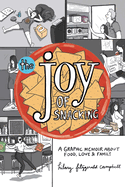
| Publisher: | Andrews McMeel | |
| Genre: | Biography & Memoir, Cooking, Humorous, Nonfiction, Snacks, Social Science, Customs & Traditions, Comics & Graphic Novels, Courses & Dishes | |
| ISBN: | 9781524876456 | |
| Pub Date: | October 2025 | |
| Price: | $24.99 |
| Graphic Books |
by Hilary Fitzgerald Campbell
Cartoonist and stand-up comedian Hilary Fitzgerald Campbell intimately mines her complex relationship with what she can/wants to/will/attempts to eat in The Joy of Snacking: A Graphic Memoir About Food, Love & Family. What lingers longest is her wide-open vulnerability--guaranteed to invoke frustrated, sympathetic, concerned, laugh-out-loud, shocked reactions.
The Joy of Snacking opens in 2024, with Campbell brimming with nervous energy (peppered with plenty of f-bombs), in anticipation of an imminent significant event, and ends with exhilaration over the gloriously revealing experience. Snacks are (always) integral--this time, it's Cool Ranch Doritos grabbed last-minute from a nearby bodega. Over the almost 400 pages in between, Campbell traces decades of her personal history that culminate in her sparkling "slay"ing debut before a sold-out Manhattan audience.
"My truest self is... a 5-year-old," Campbell confesses, specifically referring to her eating habits: even into her 30s, grilled cheese cut diagonally and prepped for ketchup-dipping remains her go-to must-have. In childhood, she didn't have the words to explain she was "legitimately terrified of food." Body issues and disordered eating plagued her well into adulthood, by which time she didn't know the difference between "hungry or nauseous."
"Drawing has saved my life," Campbell declares. Her astute illustrations capture quotidian scenes, particularly involving food: confronting hunger, seeking satiety, planning meals, anticipating culinary outings. Her hand lettering add an inviting familiarity. She sublimely uses color, with black-and-white reserved for the most devastating moments she might rather mute. However, humor is never far, and in wholeheartedly embracing all the nuances of the "joy of snacking," Campbell commands the stage to finally "live my life the way that I want." --Terry Hong
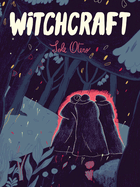
| Publisher: | Fantagraphics | |
| Genre: | Occult & Supernatural, Feminist, Fairy Tales, Folk Tales, Legends & Mythology, Comics & Graphic Novels | |
| ISBN: | 9798875001277 | |
| Pub Date: | October 2025 | |
| Price: | $34.99 |
| Graphic Books |
by Sole Otero, trans. by Andrea Rosenberg
Argentinean comics artist Sole Otero (Mothballs) offers a tale that meanders through historical and speculative fiction with Witchcraft, a graphic novel that spans centuries in Buenos Aires. The opening scene emerges spookily from the fog, as a ship arrives in Nuestra Señora del Buen Ayre in 1768. Three women disembark with their goat, taking with them the three-year-old son of another passenger, to the latter's wails of despair. From these early, atmospheric pages, a sense of unease is established and maintained.
In present-day Buenos Aires, a man tells his friend a scarcely credible story of nude women dancing around entranced nude men, with a goat and a chalk circle and "this super creepy music." In an earlier, historical setting, a Mapuche woman goes to work at a grand estate for three sisters who are both feared and respected in their local village, to a horrifying end. From these and other narrative threads, populated by spirits, witch hunts, pleas and losses, readers begin to piece together the fractured story of the María sisters and their unusual, perhaps supernatural, habits.
Otero's style of illustration is often distorted or off-kilter, and highly detailed; in full color, her characters' facial expressions and contortions advance the unnerving atmosphere of the larger story. Page spreads may include carefully spaced panels or no panels at all; text style likewise shifts, with infrequent footnotes to help readers along. This results in a sinister, mysterious, and deeply compelling reading experience. Translated by Andrea Rosenberg, Witchcraft's disjointed, sometimes discomfiting, entertaining story addresses colonial power and indigenous resistance alongside ritual, sex, and sacrifice in an eerie, phantasmagoric package not soon forgotten. --Julia Kastner, blogger at pagesofjulia

| Publisher: | Basic Books | |
| Genre: | True Crime, Corruption & Misconduct, Con Artists, Hoaxes & Deceptions, Psychology, General, Psychopathology, History, Political Science | |
| ISBN: | 9781541606517 | |
| Pub Date: | October 2025 | |
| Price: | $30 |
| Social Science |
by Moisés Naím, Quico Toro
Charlatans by Moisés Naím and Quico Toro focuses on public figures with "a knack for manipulating groups of people into trusting them." The title might conjure up thoughts of 16th-century grifters who promised to turn the ordinary into gold through alchemy. However, as global affairs experts Naím and Toro explore in their fascinating and informative work, these public figures are still very active today, sometimes in the highest reaches of government, and modern technology has only helped them to proliferate.
Naím (The End of Power) and Toro argue it is essential to be more aware of how these schemes work, rather than blaming or judging the victims. Instead of metal into gold, modern charlatans trade in cryptocurrency and are able to access vulnerable people through the parts of their lives they put online voluntarily, using their very dreams to turn more people into victims. Naím and Toro delve into Ponzi schemes, so-called health gurus, megachurches, online phenomena such as QAnon, and more.
This exploration of charlatanism is expansive and focuses on the perpetrators of these schemes, but Naím and Toro also point out factors that might make people susceptible to falling for them. It is not just a matter of gambits that promise dreams realized, but that those who might be more socially isolated are possibly more prone to becoming victimized by these smooth operators. In essence, Charlatans guides readers to understand that this is a threat not of the past, but one compounded by technology. However, Naím and Toro demonstrate how community might, in the end, be the best defense against being taken in by charlatans. --Michelle Anya Anjirbag, freelance reviewer
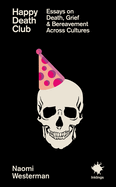
| Publisher: | Saraband | |
| Genre: | Family & Relationships, Death & Dying, Death, Grief, Bereavement, Anthropology, General, Social Science | |
| ISBN: | 9781916637238 | |
| Pub Date: | September 2025 | |
| Price: | $14.95 |
| Parenting & Family |
by Naomi Westerman
Anthropologist and playwright Naomi Westerman brings a remarkable blend of humor, quirkiness, and emotional depth to Happy Death Club, her compact and appealing collection of essays exploring death, grief, and the rituals that surround them.
Westerman's academic interest in global rituals around death became very personal when, in a short span of time, her aunt, her grandmother, and both parents died. Her response to these losses was to process her trauma by writing about it, resulting in nine essays that cover a surprising amount of ground. In one essay, Westerman explores the sustainability (or lack of it) of burial and cremation, for example, and presents some alternatives, including mellification, which uses honey to embalm the body. In another, she examines how the popularity of horror films and her own fascination with them has to do with how well they handle themes of grief. Later, Westerman looks at the flip side of this response with an incisive critique of the ways in which murder and bereavement are commodified through true crime in popular culture. In the particularly poignant "Fear and Loathing in Mexico City," Westerman recounts how the loss of her beloved pet rat led to an emotional breakdown during Día de Muertos. "In Mexico, death feels like a theme park, a roller-coaster of celebratory mortality," she writes, realizing that in this festive ritual there is a lessening of pain.
While Happy Death Club provides a fascinating guide to rituals and practices around death, Westerman's personal story and her warm, witty voice make this a valuable addition to the literature of grief. --Debra Ginsberg, author and freelance editor
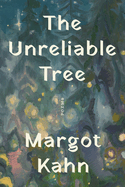
| Publisher: | Curbstone/Northwestern University Press | |
| Genre: | Women Authors, American, Family, General, Poetry, Subjects & Themes, Jewish | |
| ISBN: | 9780810148932 | |
| Pub Date: | September 2025 | |
| Price: | $18 |
| Starred | Poetry |
by Margot Kahn
Margot Kahn's radiant first poetry collection, The Unreliable Tree, ponders how traumatic events interrupt everyday life. Poles of loss and abundance structure delicate poems infused with family history and food imagery.
The title phrase describes literal harvests but is also a metaphor for the vicissitudes of long relationships: "My husband and I marry every year/ eating apricots from the unreliable tree./ Some years it's only two or three,/ while others we have enough for jam." California's wildfires, Covid-19, a mass shooting, and health crises--an emergency surgery and a friend's cancer--serve as reminders of life's unpredictability. Disaster is random and inescapable. "I never imagined how inconsequential/ we would be, how at the mercy of the wind." Kahn's grandfather, a Holocaust survivor, lost many relatives; "Dinner" whimsically brings his dead back for an imaginary dinner party. She reconsiders rootedness and ownership, asking "who isn't living/ in diaspora?" Previous owners left their traces at her home; "in a country/ far away, police have assumed the house/ of my grandfather."
Kahn (Wanting) contrasts the fecundity of fruit trees and blackberries with evidence of decline. Earlier assertions are undermined: "My husband and I get divorced/ every winter, driving over the mountains." Fashion and food facilitate memory: Kahn's grandmother is associated with her lipstick shade, her mother with her dress sense, old flames with what they ate. Alliteration and internal rhymes sparkle as Kahn reveals "the solution to dissolution": find "places that will hold you" and leaven "darkness" with "grace." --Rebecca Foster, freelance reviewer, proofreader and blogger at Bookish Beck
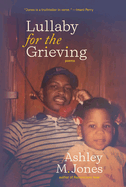
| Publisher: | Hub City Press | |
| Genre: | Women Authors, American, Poetry, African American & Black | |
| ISBN: | 9798885740586 | |
| Pub Date: | September 2025 | |
| Price: | $16.95 |
| Starred | Poetry |
by Ashley M. Jones
Ashley M. Jones (Reparations Now!) is both the youngest person and the first person of color to serve as the poet laureate of Alabama, and Lullaby for the Grieving makes abundantly evident the talent that elevated her to that position. Though a thick line of grief threads through the collection, the poems are full of life and punctuated with joy and possibility. In the full-justified prose poem "I feel powerful when," the speaker celebrates her hair, her voice, her "legs are shined up in the way Black legs shine, soaking up light, space, time, your attention and wonder."
The death of the poet's father grounds the collection, especially through the "Grief Interlude" poems interspersed throughout, each varied in style and tone but combining to provide an image of the man she describes in "Snow Poem" as "the fence to hold things out and keep us in." There is defiant anger, too, as in "Watcher Woman, or, Upon Seeing A Grown White Man Look A Black Girl Up and Down As She Passed By on a Birmingham Street," a golden shovel of Lucille Clifton's "What the Mirror Said," and in "Conflict/War," which asks: "Remember discovery and the murders necessary for making a whole new/ world? Remember Oklahoma. Remember Alabama." Despite this heaviness, the collection feels buoyant, luminous, bold. It is an incomparably fine meal, each poem to be savored, each so good as to make readers doubt the next poem could measure up. But it does. It always does. --Sara Beth West, freelance reviewer and librarian

| Publisher: | Bloomsbury | |
| Genre: | Biography & Autobiography, Education, Inclusive Education, Social Activists, Activism & Social Justice, Memoirs, Social Science | |
| ISBN: | 9781639737246 | |
| Pub Date: | September 2025 | |
| Price: | $19.99 |
| Now in Paperback |
by Amanda Jones
Middle-school librarian Amanda Jones spoke up against book banning at her local public library board meeting in the summer of 2022. For that, she has received death threats, been labeled a pedophile and a groomer, and been ostracized in the small town of Watson, La., where she has lived all her life.
That Librarian: The Fight Against Book Banning in America is partly a memoir, offering an intimate look at how she and her family have endured threats and harassment. It's also an insightful handbook on library procedures and legislation. With great honesty and vulnerability, Jones shares her lowest points with readers, but still manages to view everything she has experienced with pragmatism, humor, and goodwill. She even reflects with relief that, if this had to happen to anyone, she was glad that she was the chosen target of this hate campaign and not others from historically villainized groups who also spoke up that night.
Although Jones has experienced many devastating lows, she remains committed to the fight against censorship and finds ways to cope with the stress of harassment. She stresses the importance of community, media, and political support in the fight against censorship. She also encourages readers to find strategies to stand up against book bans and suggests methods to stay informed, such as voting in every election and attending school and library board meetings. Earnest and accessible, That Librarian is Jones's love letter to libraries, reading, and intellectual freedom, as well as a testament to her incredible resilience in the face of danger and hatred. --Grace Rajendran

| Publisher: | Random House Trade | |
| Genre: | American, General, Family, Poetry, Subjects & Themes, Animals & Nature | |
| ISBN: | 9780593731048 | |
| Pub Date: | September 2025 | |
| Price: | $17 |
| Now in Paperback |
by Billy Collins
In Water, Water, a collection of new poems, former U.S. Poet Laureate Billy Collins applies his signature wit and whimsy to everyday situations: waiting at the doctor's office, playing cards on a winter's night, reading the guest book at a lakeside cottage. In examining these ordinary moments (sometimes minutely), Collins holds them up to the light, revealing facets both absurd and beautiful: the exquisite torture (to some) of an all-violin jazz band; the "rough armadillo plates" of a pineapple; or the way that joy, personified, seems "down to earth,/ like a girl getting off a bus with a suitcase."
Throughout his career, Collins (Aimless Love; Whale Day; Sailing Alone Around the Room) has explored the beauties, amusements, and pathos of ordinary life: his poems are often about small things, at least on the surface. But his sly genius lies in turning the commonplace at an angle, allowing readers to appreciate their hidden depths. A solitary breakfast after an argument becomes a meditation on not only the history of art, but complex stories of the people portrayed in famous paintings; a reflection on illuminated medieval manuscripts leads the poet to contemplate the benefits of modernity, including his car and his wife (both beloved).
Although Collins frequently waxes philosophical, musing on constellations, ancient deities, and the very nature of existence, his poetry is at its best when capturing a particular shade of memory--fleeting, unexpected, luminous with meaning--like the one in "Daydream," when a blaze of multicolored azaleas reminds the poet of a stolen moment with the neighbor's "tall daughter/ whose hand you once held in the dark." --Katie Noah Gibson, blogger at Cakes, Tea and Dreams
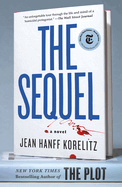
| Publisher: | Celadon | |
| Genre: | Psychological, Suspense, Thrillers, Fiction | |
| ISBN: | 9781250408365 | |
| Pub Date: | September 2025 | |
| Price: | $18.99 |
| Now in Paperback |
by Jean Hanff Korelitz
Jean Hanff Korelitz's novel The Plot was a 2021 bestseller about a bestseller; The Sequel is, that's right, The Plot's sequel. Korelitz has winking, spoofy, devilish fun with the business and ethics of novel writing in this cat-and-mouse turned mouse-and-cat literary thriller.
Anna Williams-Bonner, known to readers of The Plot as the widow of novelist Jacob Finch Bonner, is now the executor of his estate and a published author herself. She has written a novel whose storyline, a New York Times profile offers, parallels its author's own: the book charts "a brief but loving marriage, a husband's devastating suicide, and finally a slow and painful return to purpose and life." Actually, Jake was no suicide: Anna has gotten away with murder.
One day at a bookshop, where she's signing preorders of her novel, Anna receives a note suggesting that her evildoing, which has hardly been limited to killing Jake, is "not forgotten." This development sets off a tremendous plot in a novel in which a publishing industry insider tells Anna, "In general, the level of literary approbation tends to decline with the presence of an actual plot"; at another meta moment, Anna says of sequels, "They're never as good as the first book, are they?" The Sequel, which, for the record, brushes up against the brilliance of its antecedent, poses other writerly questions less explicitly, among them, who owns a story? Not in question: whether a thoroughly unlikable character can sustain readers' interest across the length of a Jean Hanff Korelitz novel. --Nell Beram, author and freelance writer

| Publisher: | W.W. Norton | |
| Genre: | Friendship, World Literature, American - 21st Century, Literary, Political, Fiction | |
| ISBN: | 9781324123736 | |
| Pub Date: | September 2025 | |
| Price: | $19.99 |
| Now in Paperback |
by Richard Powers
Richard Powers (Bewilderment, The Overstory) delivers a novel of spectacular thematic scope and surreal drama, centered on the tiny French Polynesian island of Makatea in the Pacific Ocean and those destined to make it their home. Starring four principal characters and the intriguing manner in which their stories converge and collide, Playground glides across the final decades of the 20th century and spills into the present day, culminating in a dramatic vision for mankind's oceanic and land-based future.
Play, in all its manifestations, is a means of escape for Powers's talented cast: brilliant French-Canadian marine biologist Evelyne Beaulieu; artist Ina Aroita; Todd Keane, billionaire founder of the game "Playground"; and literary genius Rafi Young. The book's title resonates with meaning at every turn in the story. And if Todd's latest project succeeds in ushering in an irreversible new age of artificial intelligence, play may indeed be all that they are good for. In Playground, the author's genius shows in his formidable descriptive talents and the graceful clarity of his densely woven plot. It matters not whether one is familiar with the topography or colonial history of teardrop-shaped Makatea, for Powers meticulously sets the stage with vivid, immersive details to ignite the reader's imagination, while Evelyne's oceanic adventures sparkle with colorful imagery.
Deep in the novel, a Makatea ravaged by capitalism and attempting a fragile recovery is seduced by the shiny promises of foreign investors yet again--this time Americans eager to launch a "seasteading" venture. Against the island's luminous blue backdrop, Playground's leading actors reunite, their destinies yielding to the one true story left to be told. --Shahina Piyarali

| Publisher: | Picador | |
| Genre: | Horror, General, Literary, Supernatural, Thrillers, Fiction | |
| ISBN: | 9781250397591 | |
| Pub Date: | September 2025 | |
| Price: | $18 |
| Now in Paperback |
by Rivers Solomon
Ezri and their two sisters stay far, far away from the "cursed McMansion" where they grew up as the only Black family in a too-white, too-exclusive suburb. But after receiving disturbing text messages from their mother's phone number, Ezri does the "siblingly" thing and returns to the house, where they find their parents dead in the backyard. The now-empty house is steeped in memories of the "invisible tyrannies" they experienced there: bathwater turning to acid; a dirty clump of hair clogging the drain; taking a nap and waking up inside the oven. "The world unfolds according to a logic most strange when you're a child, and it wouldn't do any good to try to parse it. If a house has claws, a house has claws."
These tyrannies, past and present, stretch across Rivers Solomon's haunting Model Home as the siblings face their worst fears to determine what happened to their parents. Each has their own recollections and understanding of what was--and is--true about the house they grew up in and what might be delusion. Writing from Ezri's point of view, Solomon (An Unkindness of Ghosts) succeeds in setting up a narrative that is as convincing as it is unbelievable, creepily unfolding like a cross between a fever dream and an epic story of gaslighting. Chilling and terrifying, Model Home proves to be a wild, eerie novel of family secrets and abiding love, teetering on the edge of the fantastical but contextualized by the very real horrors of a modern world rife with disturbing dynamics of race, gender, class, and trauma. --Kerry McHugh, freelance writer
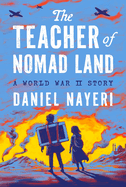
| Publisher: | Levine Querido | |
| Genre: | Middle East, War & Military, Juvenile Fiction, Historical | |
| ISBN: | 9781646145669 | |
| Pub Date: | September 2025 | |
| Price: | $18.99 |
| Starred | Children's & Young Adult |
by Daniel Nayeri
Iranian-born author Daniel Nayeri's middle-grade novels Everything Sad Is Untrue and The Many Assassinations of Samir, the Seller of Dreams received between them the Michael L. Printz Award, a Newbery Honor, a Middle East Book Award, and a Walter Dean Myers Award Honor. The Teacher of Nomad Land, a tightly crafted odyssey about two siblings in World War II Iran, seems unlikely to break Nayeri's award-winning streak.
After occupying British soldiers kill their father, 14-year-old Babak and nine-year-old Sana, now orphans, leave their hometown. They're determined to travel with the nomadic Bakhtiari tribe, with whom their father worked as a teacher. The tribe agrees to take the orphans if Babak demonstrates his ability to serve the tribe as his father did, but Babak fails to prove his worth. The children get lost on their way back to town, and a Nazi spy ostensibly searching for a 13-year-old Polish Jewish boy finds the siblings instead, drawing them all into a multifaceted conflict with no straightforward solutions.
Nayeri's gifts for understatement, restraint, and split-second swings between humor and emotional devastation are on full display, and all three make for an affecting read. At times, the novel has the feel of a parable, but the specificity of Nayeri's characterizations and dialogue keep it grounded in "the land of the here and now." It all builds to a climax that, in less skilled hands, would feel far-fetched, but here feels pleasantly surprising yet inevitable. Surely Nayeri will someday publish a less-than-perfect novel--but he hasn't yet. --Stephanie Appell, freelance book reviewer
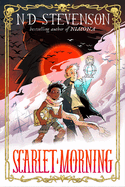
| Publisher: | Quill Tree Books | |
| Genre: | Friendship, Alternative Family, Adolescence & Coming of Age, Fantasy, Pirates, General, Family, Social Themes, Juvenile Fiction, Action & Adventure | |
| ISBN: | 9780063210349 | |
| Pub Date: | September 2025 | |
| Price: | $19.99 |
| Starred | Children's & Young Adult |
by ND Stevenson
Bestselling author/illustrator ND Stevenson (Nimona) creates his first middle-grade fantasy with Scarlet Morning, a suspenseful and exceptionally magical illustrated novel that follows two orphans determined to change--and save--a world destroyed by adults.
Once, the world wasn't broken: "the sky was blue, and the spray of the sea wouldn't burn your flesh." At that time, the people of Dickerson's Sea were ruled by a beloved Queen. But the "blackhearted" Scarlet Morning killed the queen and brought a dreadful storm that destroyed the sea, the birds, and memory itself. Orphans Viola and Wilmur never knew this world; they only know life with Hestur, their caretaker, on the island of Caveat in Dickerson's Sea. After Hestur vanishes, the dangerous and strange Captain Cadence Chase appears. In exchange for Violet and Wilmur's single treasure--the Book, full of secrets and puzzles--Chase offers them safe passage on her pirate ship. It is there that Viola and Wilmur begin to understand how many secrets have been kept by the captain, by their long-lost caretaker, and by the other adults crossing Dickerson's Sea.
Stevenson delivers a story full of twists and original genre-blending interpretations of magic in Scarlet Morning. Laced with horror and humor, the story perfectly balances the whiplash of a traditional high fantasy pirate adventure set in a terrifying world reshaped by adults. More than 100 black-and-white illustrations in Stevenson's signature style set tone and add nuance to the unfolding mysteries. Give Scarlet Morning to fans of Katherine Rundell and Ashley Mackenzie's Impossible Creatures or Lemony Snicket's A Series of Unfortunate Events; even knowing the dangers, they will surely want to set sail on Dickerson's Sea at once. --Nicole Brinkley, bookseller and writer
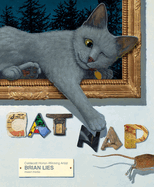
| Publisher: | Greenwillow | |
| Genre: | Cats, Art, Animals, Exploration & Discovery, Social Themes, New Experience, Juvenile Fiction, Historical | |
| ISBN: | 9780062671288 | |
| Pub Date: | September 2025 | |
| Price: | $19.99 |
| Starred | Children's & Young Adult |
by Brian Lies
Brian Lies's visual delight Cat Nap is a feline-fueled romp through 10 masterpieces of art history, all lovingly re-created by hand. The story opens in a late-afternoon living room where a sleepy gray kitten stirs. When a mouse darts by, Kitten leaps after it into a Metropolitan Museum of Art poster, and the chase begins--through time, culture, and media.
Caldecott Honor winner Lies (Little Bat in Night School) opens with soft alliteration--"Late light lies, warm, over sofa, Kitten, book"--setting a lyrical tone. As Kitten bounds after the mouse, they tumble through artworks from diverse cultures and eras: an ancient Egyptian limestone carving, a 14th-century illuminated manuscript, a Japanese ink drawing, and more. In each piece, the chase adapts to the aesthetic, subject matter, and mood of the work. Lies's palette shifts to match the original works: filling the pages with the saturated blues, reds, and green of stained glass, circa 1497, or the earthy tones of a ceramic dog from the Remojadas culture in the early 8th century. The 3D nature of the illustrations, crafted from materials like clay, paper, glass, and much more, gives many pages a tactile, museum-like feel.
But this isn't just an artistic showcase. Lies also brings readers a heartfelt adventure. When Kitten gets separated from the mouse and becomes lost in the museum-like world, an Italian panel painting of St. Anthony of Padua gently points Kitten toward home. Extensive back matter identifies each artwork, its origin, and medium and includes notes from Lies about the creative process. With its lyrical text, handcrafted visuals, and journey through global artistic traditions, Cat Nap is a feast for the eyes and imagination. --Julie Danielson
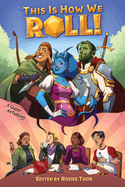
| Publisher: | Page Street YA | |
| Genre: | Short Stories, Collections & Anthologies, General, Social Themes, Young Adult Fiction, New Experience, LGBTQ+ | |
| ISBN: | 9798890033086 | |
| Pub Date: | September 2025 | |
| Price: | $18.99 |
| Children's & Young Adult |
by Rosiee Thor, editor
Author, short story aficionado, and editor Rosiee Thor (Tarnished Are the Stars;) returns with a soapy, witty, and heartfelt assemblage of queer tales all told through the lens of role-playing games.
This Is How We Roll is a showcase for how the world of the fantastic can affect reality. Depicted through a broad spectrum of storytelling, the individual stories (and individual campaigns) cover an expanse of genres and experiences. "Captain's Log" by M.K. England is a love story in which a space pirate captain and their first mate develop a relationship that blooms into a real-life gay awakening on the back of a school bus. ("Zero to first boy kiss in five seconds. Okay, I can roll with this.") Andrew Joseph White's "Oathbreaker" is a family drama featuring a transgender paladin on an epic quest for acceptance; the teen's role-playing adventure ultimately brings father and son together in a gut-wrenching and cathartic fashion. Linsey Miller takes on Shakespeare's Much Ado About Nothing in the nerdy, asexual "Silvery Barbs," and Jamie Pacton and Rebecca Podos travel different paths to create two lightly intertwined stories about summer camp and the endurance of love in "Camp I" and "Camp II," respectively.
The queer diaspora is on full display here, describing a variety of characters and subject matter that is impressive and winning. Bisexuals, bards, barbarians, a nonbinary vampire, and more make an appearance as teens tackle their insecurities, family issues, and romantic entanglements. This Is How We Roll is a critical hit. --Luis G. Rendon, freelance reviewer
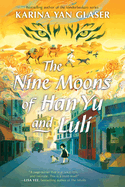
| Publisher: | Allida/HarperCollins | |
| Genre: | Travel, Art, General (see also headings under Social Themes), Family, United States - 20th Century, Social Themes, New Experience, Juvenile Fiction, Action & Adventure, Historical, Asian American & Pacific Islander, Diversity & Multicultural | |
| ISBN: | 9780063284432 | |
| Pub Date: | September 2025 | |
| Price: | $19.99 |
| Children's & Young Adult |
by Karina Yan Glaser
Karina Yan Glaser, best known for the seven-volume Vanderbeekers series (The Vanderbeekers of 141st Street), gloriously connects Han Yu in 731 Chang'An and Luli Lee of Lower Manhattan in 1931 in The Nine Moons of Han Yu and Luli.
At 11, Han Yu is unlike his accomplished older three siblings. His only certainty is his remarkable rapport with animals, which makes his "community [see] him as somewhat of an oddity." When a mysterious, rapidly spreading illness traps his family in quarantine, Han Yu bravely decides to take on his merchant father's trade route--a 650 li (202 miles) journey to Tianshui. Along the way, three magpies, two camels, one dog, the young poet Du Fu, and a tiger Han Yu can't see (but others can) become loyal companions.
In NYC's Chinatown, 11-year-old Luli's parents are facing foreclosure on 59 Mott Street, home to their Jade Palace Restaurant, Quong's Silk Roads Gift Shop, and multiple tenants all struggling with economic disaster. When the restaurant becomes unsustainable, Luli valiantly creates a food cart where her ingenuity proves limitless.
Alternating between the centuries, Glaser deftly intertwines parallel experiences that highlight the power of family and friendship to overcome unforeseen dangers. Glaser's plotting is seamless, with hints expertly inserted to allow readers to eventually, rewardingly connect the two narratives. Her own spot illustrations whimsically interrupt her text with everyday items, flora, and fauna. Her illuminating author's note provides a trove of additional personal and historical provenance--how this book "began with dim sum" and spread into a deeper understanding of connections, past, present, and future. --Terry Hong